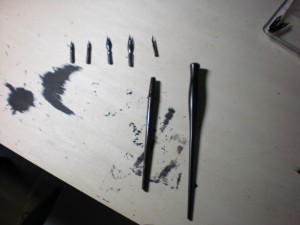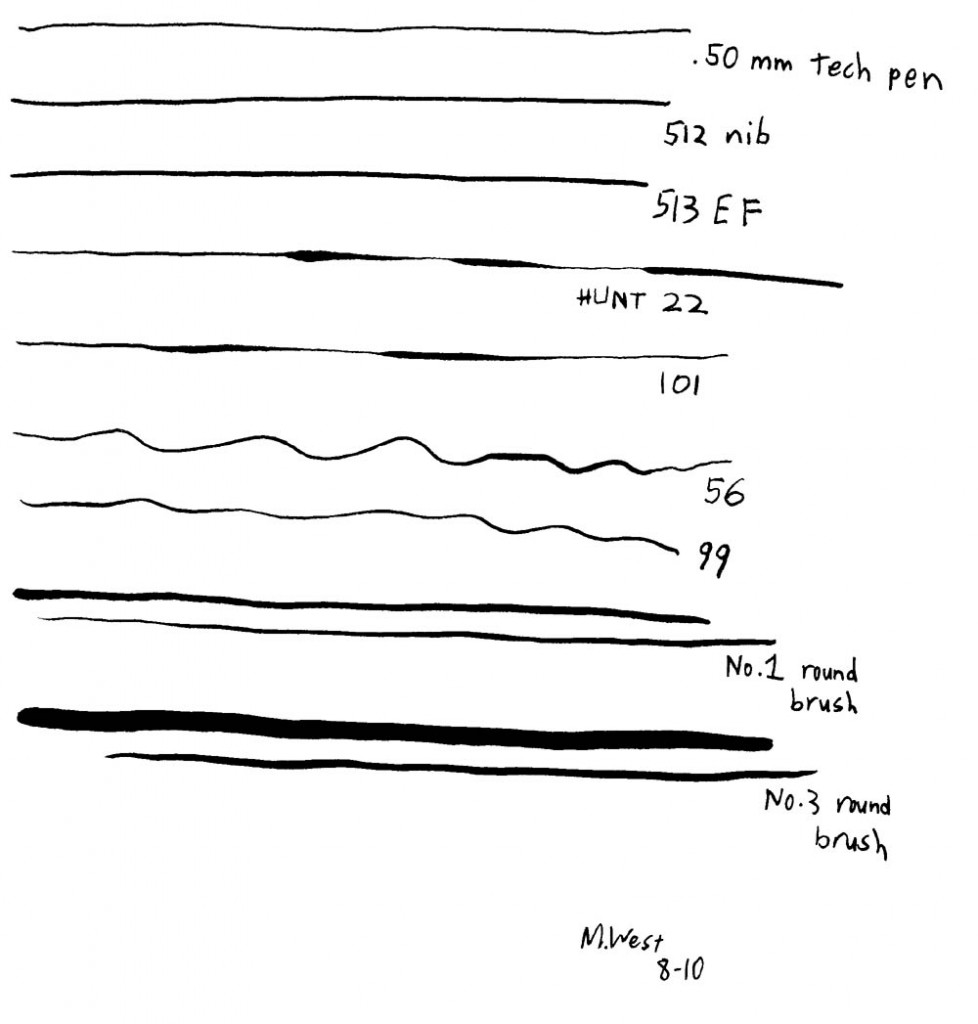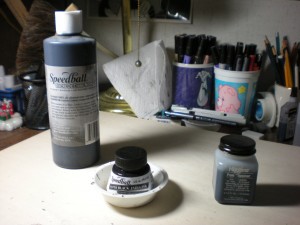Greetings, steadfast readers. Last week, I discussed one of my tools I use for creating Sunnyville Stories – the technical pen. If you haven’t read that post…shame on you! Go back and read it right now. I’ll wait.
Technical pens are handy for when you need a flat, consistent line. Some of you may want some more variation in your lines. Then what you want is the dipping pen. Also called the nib pen or the mapping pen, it’s probably one of the oldest writing and drawing implements in the world. For centuries, people have used pens like these, albeit ones made of wood, reed, or even feathers to draw and write with. In fact, the word “pen” is derived from the Latin word “penna” which means feather. Metal nibs didn’t become commonplace until around the 1800s when British inventor Joseph Gillott found a way to make nibs of bronze and steel for cheap.
The nib pen consists of a metal tip which is then inserted into a holder of plastic or wood. For those of you who live in the USA, the nibs you’ll see sold in most art supply and stationery stores will be made by Hunt and Speedball (both the same company). Those of you in Europe will have access to the nibs made by the manufacturer Gillott (named after the aforementioned fellow).
There are different kind of nibs. There are lettering nibs which give a flat, consistent line much like the technical pens. Hence the name, they are meant for lettering work. You also have bowl shaped nibs like the Hunt 512 and 513 Extra-Fine (which are my nibs of choice) – these give a more organic line than fixed-width pens but not as much variety as other nib pens. Many other nibs are out there such as the Hunt 99, Hunt 102, Hunt 107, Hunt 56, etc. Some will give a variety of thick lines while others will give a thinner line. I can’t recommend a particular nib to you – it all depends on your needs, your subject, and your own preference. If the nib pen is a tool you want to use, then experiment with different tips. Pen nibs are cheap so buy some from an art supply store and try making lines with them. Here’s a quick comparison of various nibs. I’ve shown a technical pen and two brushes for comparison.
Another difference from other pens is that the dip pen does not have a supply of ink therein. You have to dip the nib into a bottle of ink often to recharge it. If you draw comics like I do, get a waterproof type of ink. There are many brands out there so you’ll have to shop around, try some out, and research reviews on them. I use Speedball Super Black India ink as it gives a rich even black on the page. They have to be cleaned too so keep a container of water around to rinse the nibs and a rag/paper towel to wipe them off. Pick up a jar of pen cleaning solution (on the right) to get them really clean – they’ll remove what water can’t.
Some examples of artist using nib pens are Robert Crumb, Tom Hart, Jaime Hernandez, and Franco Matticchio. Many newspaper cartoonists used nib pens too such as George Herriman, Bud Fisher, Elzie Segar, and Winsor McCay.
For more information on using pen-and-ink, check out the book The DC Comics Guide to Inking Comics by Klaus Janson. For general pen-and-ink technique, check out the works of Claudia Nice such as Drawing in Pen and Ink (available through North Light Books). And on another note, I have a YouTube channel now as well as an official promotional video for Sunnyville Stories!
[youtube]http://www.youtube.com/watch?v=xEOi5iWtlzg[/youtube]
Well, that’s all for this week. Be sure to check back next Wednesday for yet another entry into the official Sunnyville Stories web log. Same Bat time, same Bat channel!




Pingback: How to Make Comics: Lettering Comics | Sunnyville Stories
Pingback: How to Ink with a Brush | Sunnyville Stories
Pingback: Review: Drawings Words & Writing Pictures | Sunnyville Stories